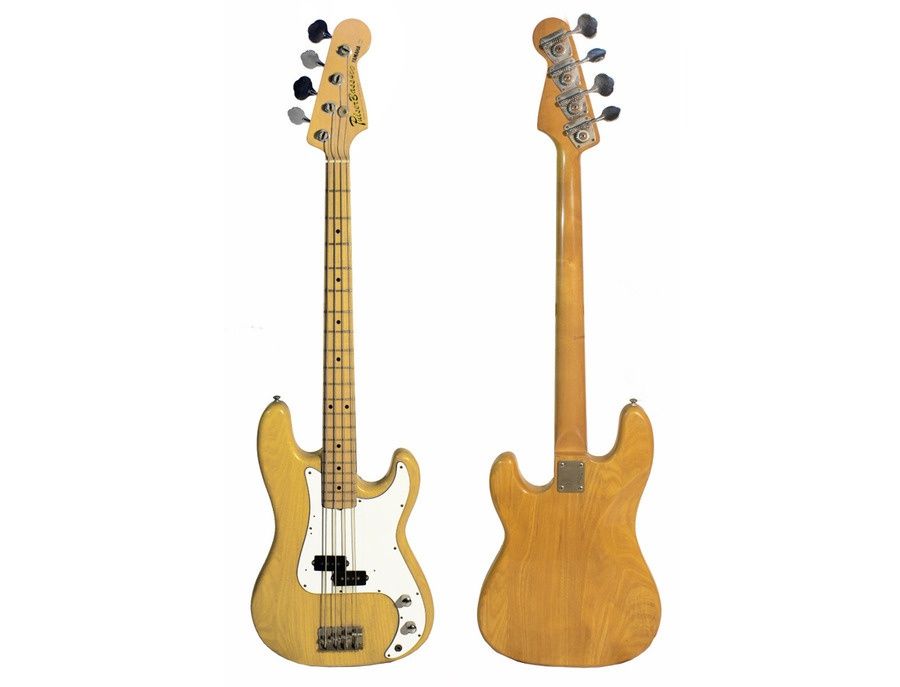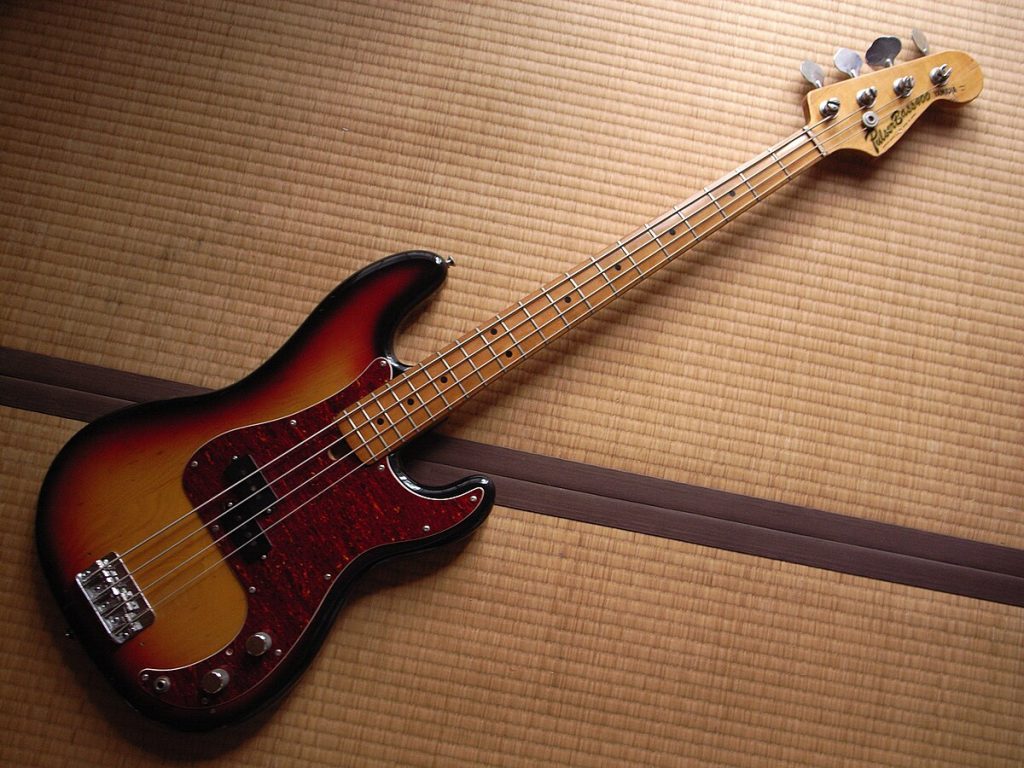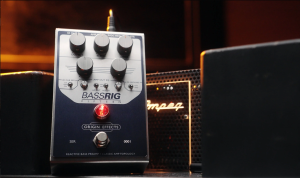A P-Style Bass With Japanese Precision
In the 1980s, while Fender was navigating shifts in ownership and quality control, Yamaha quietly built some of the most reliable and well-crafted instruments on the planet. One of those was the Pulser Bass, Yamaha’s take on the iconic Precision Bass formula. Made in Japan and sold primarily in the domestic market and select international regions, the Pulser never reached the household name status of its Fender counterpart — but among discerning players, it became a sleeper hit.

The Pulser is often seen as part of the Yamaha BB (Broad Bass) family tree, sharing construction ethos and parts design. But what sets the Pulser apart is how faithfully it channels the spirit of a vintage P-Bass, while simultaneously offering Yamaha’s characteristic build precision, durability, and low cost of entry.
Whether you’re into flatwounds and dub grooves or need a punchy, clear foundation for funk, punk, or indie, the Pulser earns its name: it’s a bass that thumps and pulses with purpose.
A Brief History: The Quiet Counterpart
Yamaha launched the Pulser Bass in the late ’70s and early ’80s, alongside their growing family of affordable, performance-focused instruments. At this time, Yamaha was capitalizing on Japan’s increasing global reputation for instrument manufacturing quality — the same wave that brought about Tokai, Fernandes, Greco, and early MIJ Fenders.
The Pulser was clearly modeled after the Fender Precision Bass, but it wasn’t a clone. It was a reinterpretation — built with a distinct Yamaha voice:
- High-quality materials, including solid alder or sen ash bodies, and well-seasoned maple necks.
- Slimmer, often more comfortable neck profiles.
- Consistent fretwork and tuning stability that rivaled or surpassed the U.S.-made equivalents of the time.
- Durable electronics with clean, mid-focused tone output.
Though Yamaha never pushed the Pulser with the same marketing fervor as its BB-series cousins, it quietly built a reputation among session players, students, and budget-conscious professionals looking for a reliable, no-frills instrument.
Build Quality and Feel
Where some ’80s Fenders could feel inconsistent or sluggish, the Pulser Bass often surprises with its immediate playability and comfort:
- Neck profile: Generally closer to a slim “B” or “C” shape — slightly narrower and rounder than a standard Precision. Great for faster lines and extended sessions.
- Finish: Most models were finished in durable poly (common in the era), but Yamaha’s poly tended to be thinner and harder than Fender’s, giving a more resonant feel and snappier attack.
- Weight and balance: Well-contoured bodies and smart strap pin placement mean they hang well and feel even. Typically 8.5–9.5 lbs — substantial without being a burden.
- Hardware: Reliable open-gear tuners, solid bridge, and Yamaha’s house-made pickups — nothing flashy, but everything works decades later with minimal service.
Tone: Familiar, but Sharpened
At a glance, the Yamaha Pulser sounds like a traditional Precision Bass: strong fundamental, mid-forward bark, slightly rounded highs, and thumpy lows. But there are subtle differences:
- Tighter low-end: Yamaha pickups are slightly more compressed and articulate than vintage Fender ones. Great for players who want more clarity and mix-cutting definition.
- Slightly scooped mids: Not as gritty as some ‘70s P-Basses, the Pulser tends to have a smoother midrange — which can be a plus for slap, synth emulation, or more modern tones.
- Clear, focused attack: Notes tend to “speak” quickly, which gives the Pulser a precise, controlled feel, especially under the fingers.
For flatwound users, the Pulser becomes a machine of smooth punch and bloom. You get that classic thump and lo-mid grunt without losing detail, and without the microphonic behavior some older Fenders exhibit.

Comparison to Fender P-Basses of the Era
The early-to-mid ’80s was a rocky time for Fender. The transition from CBS ownership to the new era under FMIC (post-1985) marked a period of uneven quality, particularly in U.S.-made instruments. While some 1980s Fenders are excellent, many suffer from heavier bodies, spotty fretwork, and inconsistent electronics.
In contrast, the Yamaha Pulser often came off the factory floor cleaner and more consistent. Key comparisons:
| Feature | Yamaha Pulser | Fender P-Bass (1980s) |
|---|---|---|
| Build Consistency | High (MIJ standards) | Variable (pre-FMIC era) |
| Neck Profile | Slim, playable | Varies from chunky to wide |
| Tone | Clean, punchy, modern | Classic, sometimes woolier |
| Weight | Moderate and balanced | Often heavier |
| Price Today | Budget-friendly ($400–800) | Vintage pricing ($1,000–2,000+) |
The Pulser offers a refined alternative: vintage feel without the collector price tag, and enough tonal accuracy to cover traditional P-Bass roles with confidence.
Pros and Cons
Pros:
- Excellent build quality, especially for the price
- Classic P-Bass tone with a slightly modern edge
- Great for flatwounds and vintage-style playing
- Comfortable, fast-playing necks
- Durable — these instruments age well
- Significantly more affordable than Fender equivalents
Cons:
- Lacks brand recognition — may be overlooked or undervalued
- Fewer finish options and variations
- Pickups are solid, but not boutique or high-output
- Harder to find outside Japan or second-hand markets

Conclusion: A Vintage Bass Without the Vintage Tax
The Yamaha Pulser Bass is one of the best-kept secrets in vintage-style instruments. It delivers everything players love about the P-Bass platform — deep, fundamental tone, rock-solid simplicity, and roadworthy build — but sidesteps the inflated pricing and QC variability of more famous brands.
For bassists who want a true player’s instrument, especially one that shines with flatwounds or in vintage-styled settings (soul, reggae, post-punk, lo-fi), the Pulser isn’t just a solid choice — it’s a smart investment.
You won’t find prestige in the headstock. But you’ll find tone, comfort, and reliability in your hands. And sometimes, that’s the more powerful legacy.





